| Photo of the month – March 2022 |
[German version] |
| For the second time this year, we are pleased to bring you two columns. |
|
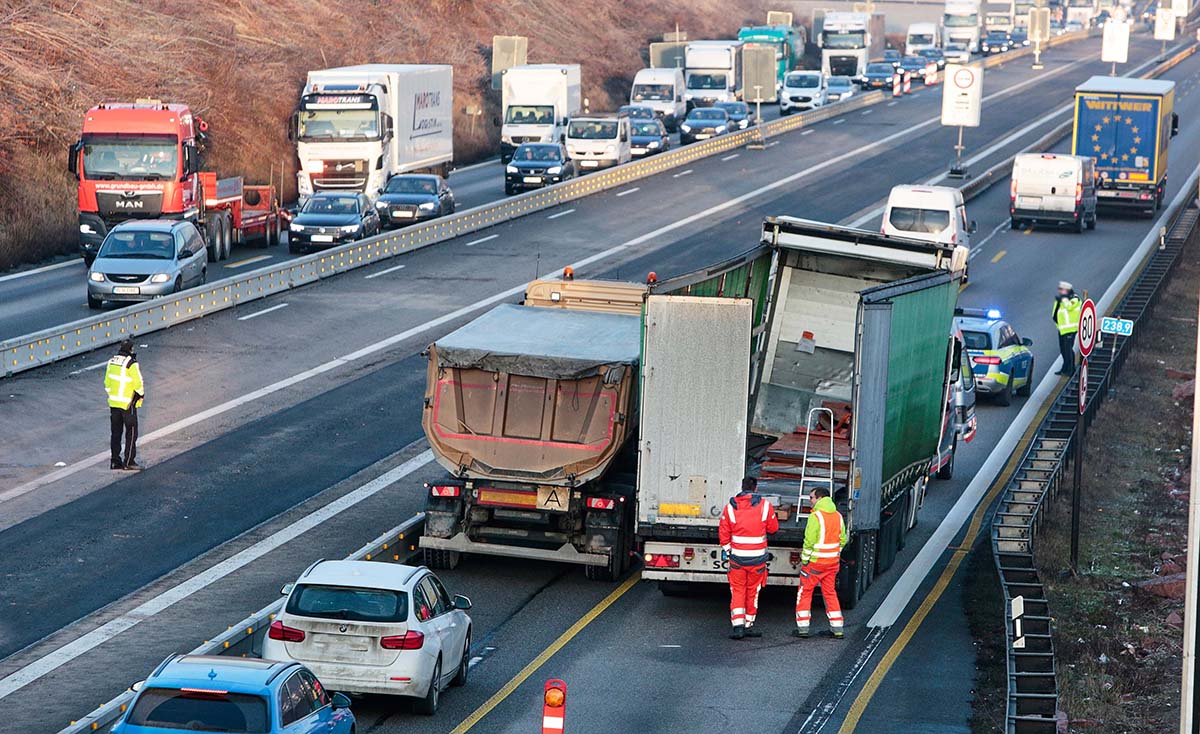 |
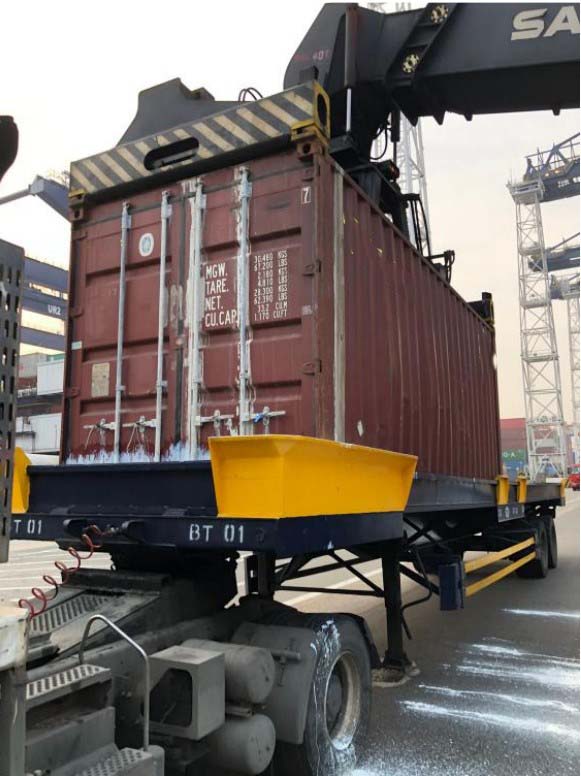 |
| The long and winding road to safe transport | Flexitank leaks |
The long and winding road to safe transport

Figure 1 [Tilo Keller]
An accident that occurred around roadworks and was caused purely by poor securing of the load led to the road being completely closed. The closure may have lasted one or two hours – we don’t know. But the consequences were not inconsiderable. How many people were late for their appointments? And trucks with their loads were at a standstill with the clocks ticking all the time. Work time, vehicles and materials used and so on. And why? We want to have a closer look, even if we sometimes feel we are tilting at windmills. We simply won’t give up!
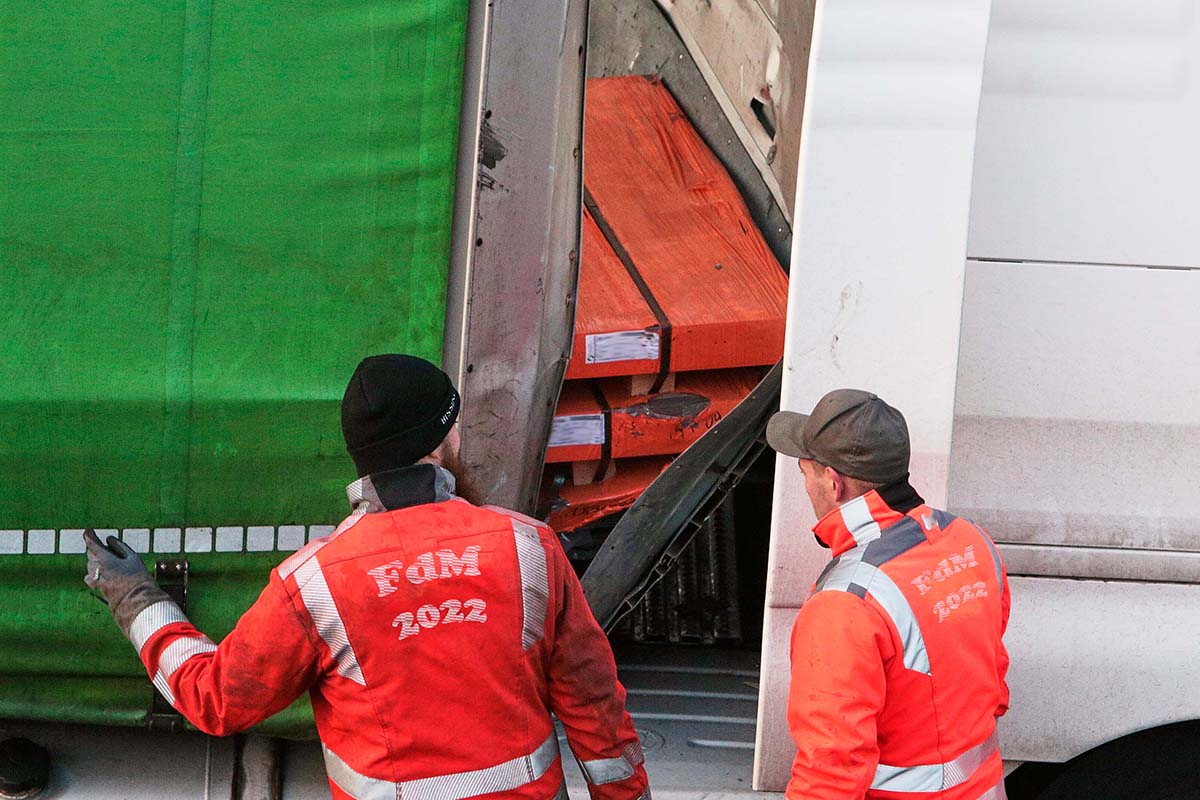
Figure 2 [Tilo Keller]
This photo speaks volumes. The presence of the road assistance crew indicates that assistance or recovery is underway. The end wall had been torn open from the inside by the load. The supply lines from the cab to the trailer had been ripped off. This meant that it was not possible for the vehicle to continue on its way, and so the load had to be transfered to another vehicle.
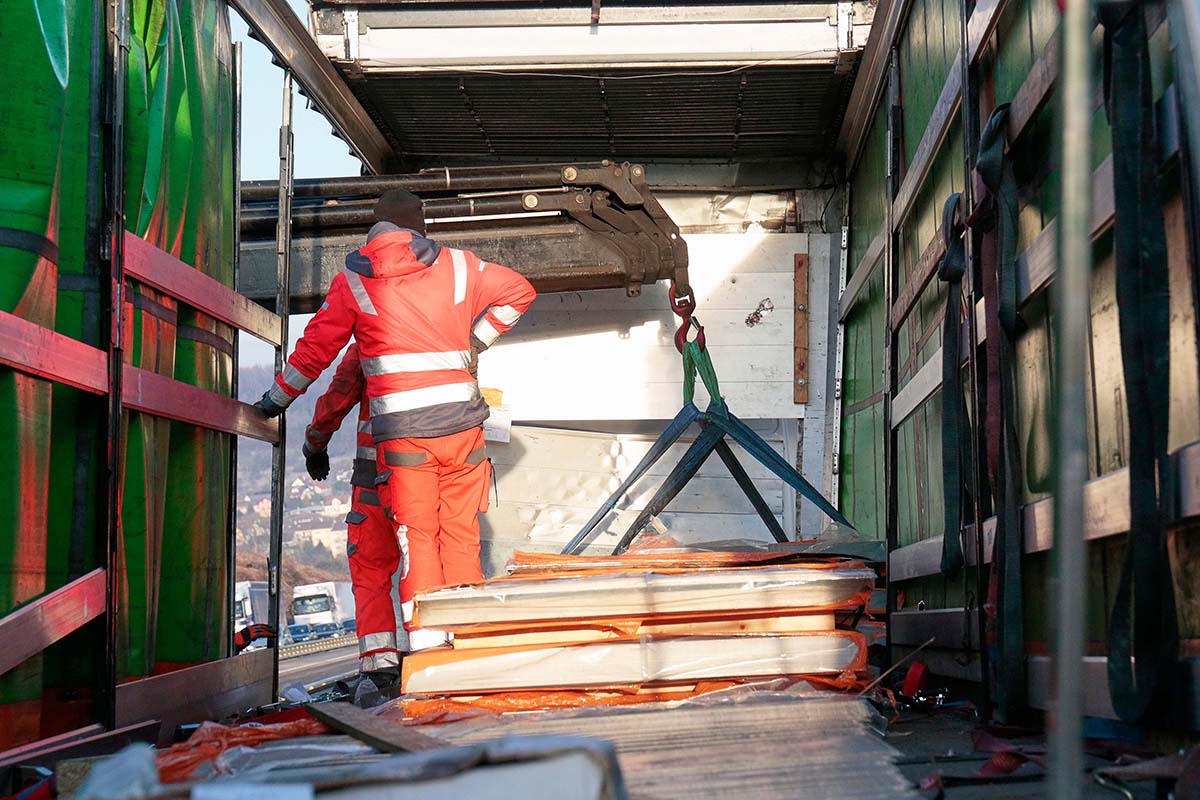
Figure 3 [Holger Kuhles]
The load was made up of packages of steel sheets wrapped in plastic. The packages were clearly not bundled with steel straps longitudinally. We don’t know whether the steel sheets had been coated with oil, but we assume that they were, given the distance that the sheets moved and the “work” they were able to do.
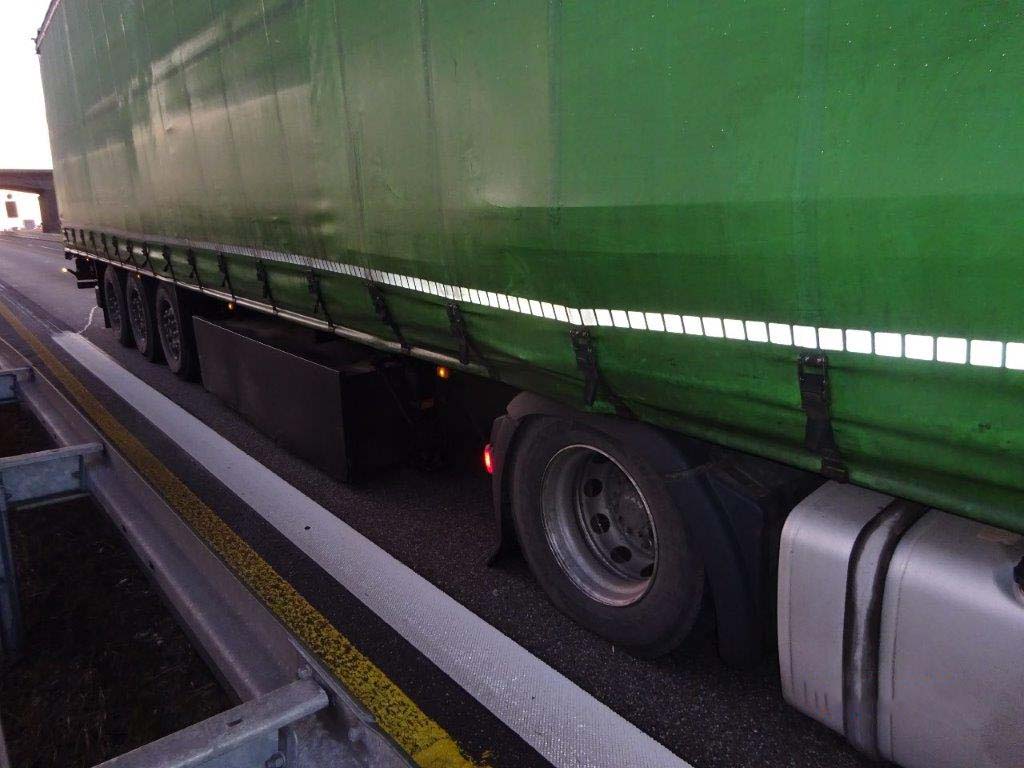
Figure 4 [Holger Kuhles]
Even though the vehicle braked in a straight line, the load shifted to the right, which also suggests a very low level of friction. The tarpaulin has bulged significantly, but it just managed to hold the load. If the vehicle had braked in a corner, the steel sheets would have penetrated the tarpaulin and would have fallen onto the carriageway. If there had been any oncoming traffic, there would have been a serious risk of fatalities.
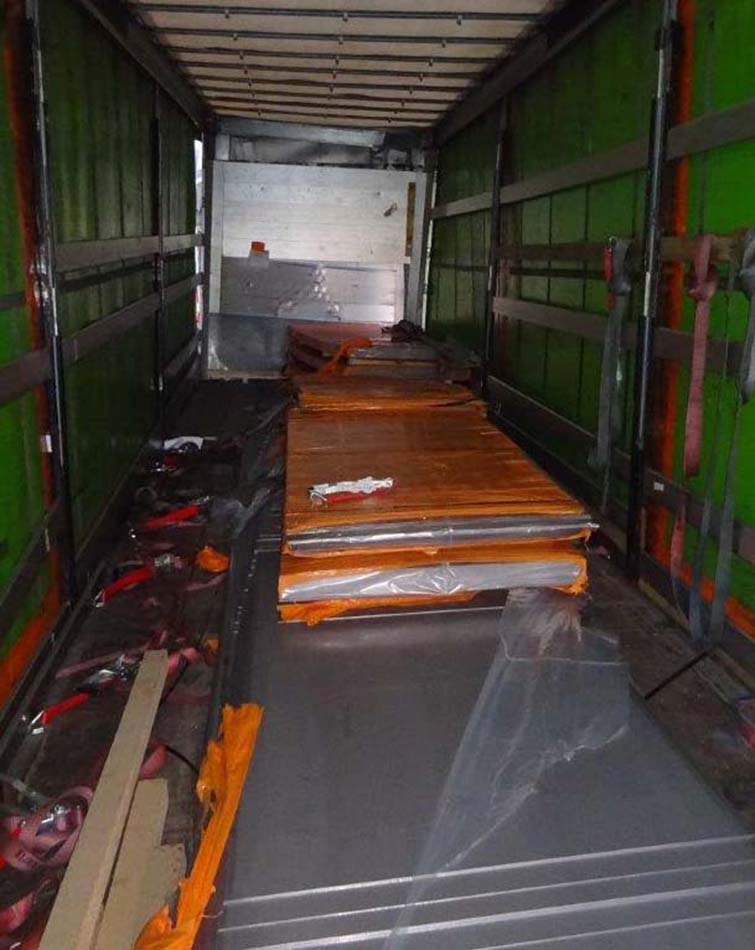
Figure 5 [Holger Kuhles]
This photo gives an impression of the forces that were unleashed and of the way in which the load was secured.
- 8 or 10 belts arranged as tie-down lashings over the packages of steel sheets,
- razor-sharp corners,
- no edge protectors,
- no longitudinal strapping (as mentioned above),
- ridiculous packaging that may suffice to keep the dust off the load but which probably makes it more likely for the load to slip,
- and a load that has fanned out beautifully, like a pack of cards thrown carelessly onto a table. The problem is that such carelessness could have presented a deadly risk in this case.
Assessment:
- The packaging is disastrous. The load cannot be transported safely in this state.
- The attempt to secure the load was futile: Placing belts over razor-sharp edges is, to put it mildly, nonsensical, and this photo provides all the proof you could wish for.
- Who is to blame? Certainly the loader and, as always, the driver.
How to load this cargo correctly:
- To load this cargo correctly, we have to start with the packaging. The packages need to be bundled with steel straps running laterally and horizontally, in such a way that they can be stacked.
- If the steel sheets are coated with oil, this needs to be taken into account when choosing the size of the steel straps, as there is virtually no friction between oiled sheets.
- Dunnage should be rectangular and have a groove to accommodate the steel strapping.
Securing the load properly:
- Anti-slip mats must be used in such a way as to isolate the load from the loading surface and the packages from each other in terms of friction.
- Edge protectors must always be used, in this case to protect the belts from being cut through and to allow the pre-tensioning force to be distributed evenly, and otherwise to protect the edges of the load from deformation.
- In the longitudinal direction, artificial end walls constructed from stacked squared lumber can be very useful. These in turn have to be restrained using load-securing equipment.
- If the load-securing equipment can be protected effectively from the sharp edges of the steel sheets, or if the load is packaged well enough to allow the use of chains, then lashing belts or chains can be passed crosswise over the front face of the packages to serve as direct lashings to provide the additional securing force to the front.
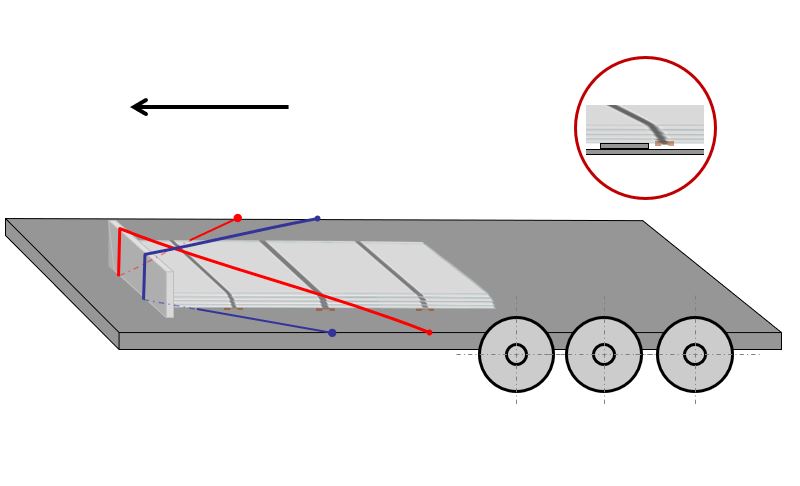
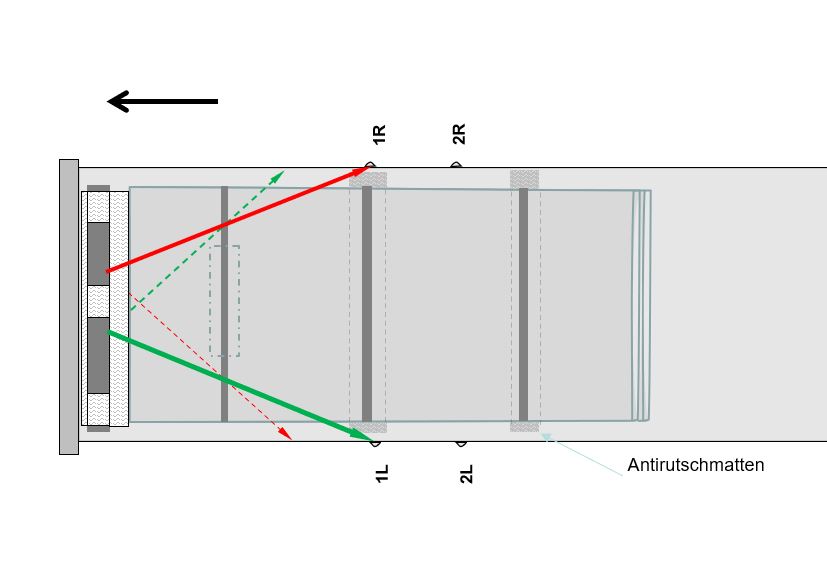
Diagrams 1, 2 [TIS] - We would secure the load to the sides using loop lashings. This does not involve a great deal more effort, but provides a far greater securing effect.
Your load securing columnists as always wish you a safe and secure journey!
Back to beginning
